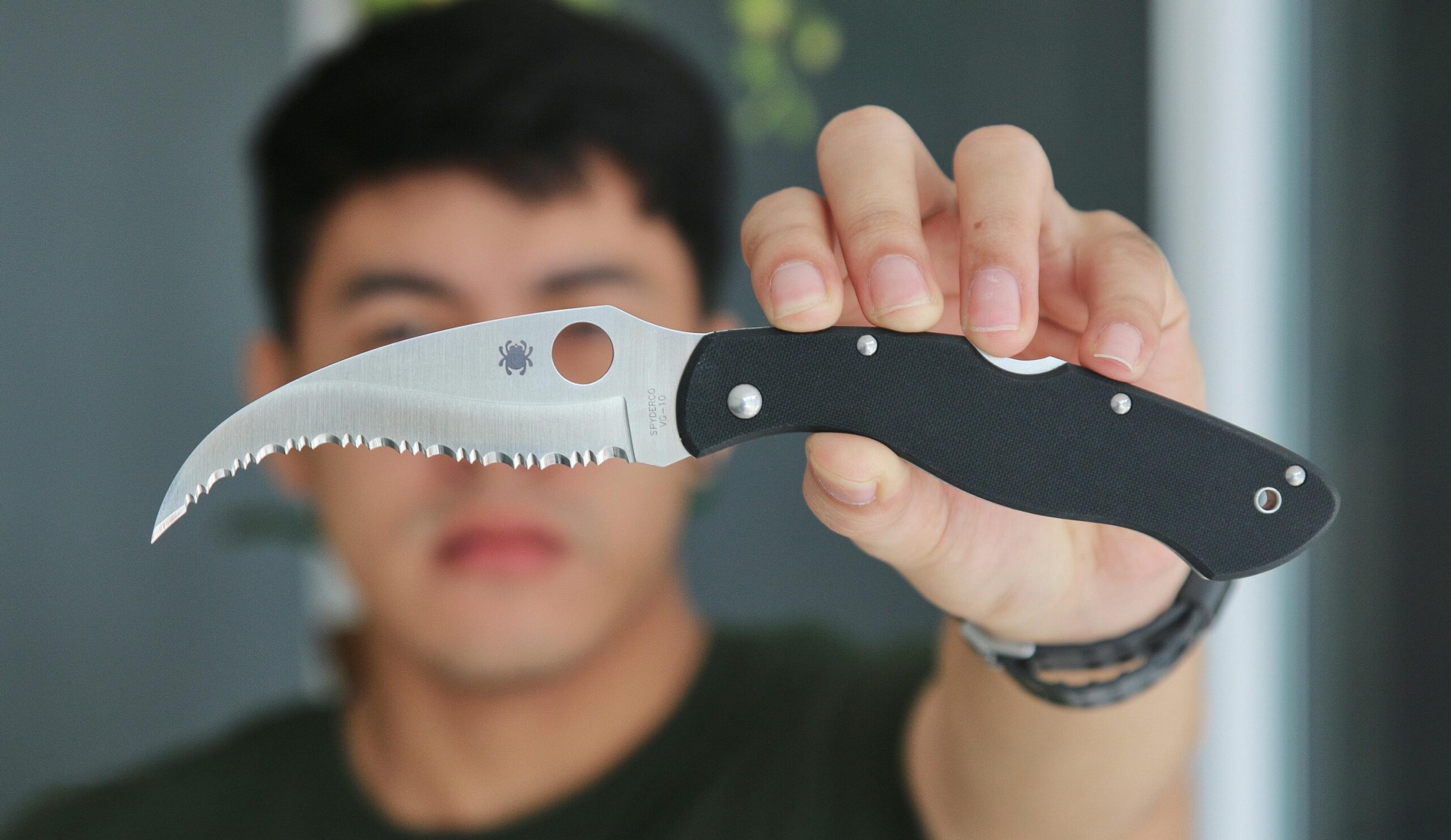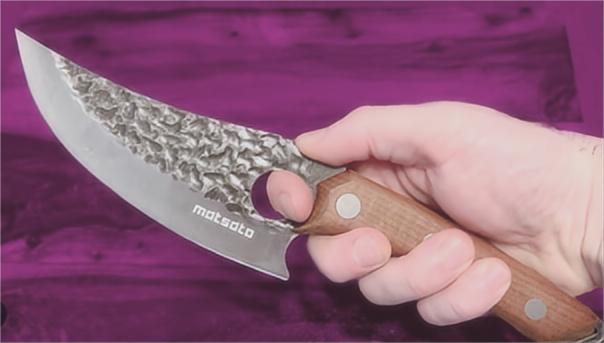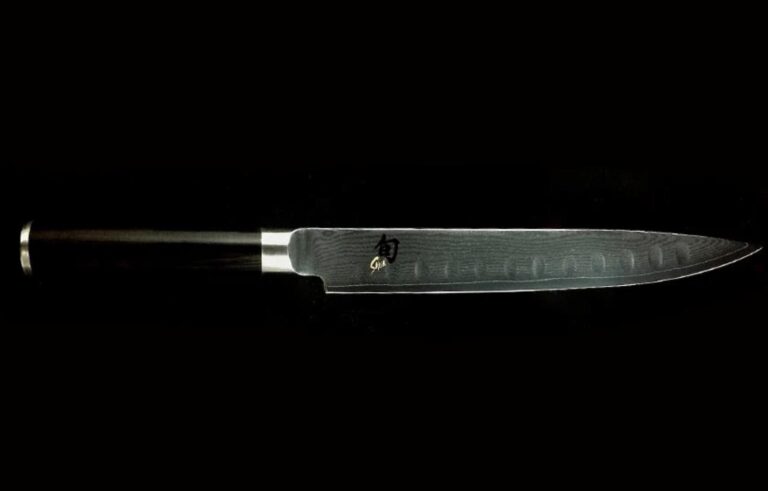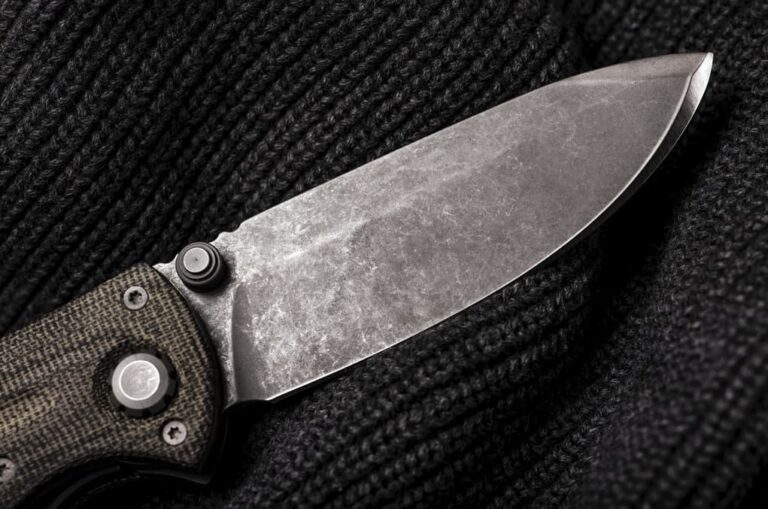The hawkbill blade stands out for its curved shape that hooks into materials, making tough cutting jobs easier and safer. If your customers need a knife for pruning, carving, or working with rope, this blade is known for its precise and controlled cuts, especially in outdoor or trade settings.
You’ll discover that the hawkbill knife has a strong history and is popular among gardeners, electricians, and fishermen for its reliable performance. Use this guide to quickly learn what makes hawkbill blades unique and why they bring extra value to your product lineup.
What Is a Hawkbill Blade?
A hawkbill blade is a unique knife blade shape that curves downward, like the beak of a hawk. The edge is concave, with the tip bending toward the handle. This curve gives you more control when making pull cuts.
Unlike a straight knife, a hawkbill blade uses its entire curved edge for cutting. This means you apply less pressure because the shape does most of the work. The design also provides increased precision and greater control during cutting tasks.
You may see these blades in industries like shipping, landscaping, and electrical work. They are popular among professionals who need a safe, handy knife for tough materials. Many marine knives use hawkbill blades because the hooked shape prevents rope from slipping away while you cut.
Some hawkbill blades have lengths around 2 to 4 inches, giving you a compact but efficient tool. If you want a specialized cutting tool, the hawkbill blade is your go-to option.
History of Hawkbill Blade
The hawkbill blade has a unique history that goes back several centuries. Its curved shape, looking much like a bird’s beak, was first created to make cutting tasks easier.
In the early 1800s, blacksmiths in Sheffield, England, started producing the first true hawkbill knives. You’ll find that these blades quickly became popular among sailors and maritime workers for cutting rope and tackling tough jobs at sea. The strong point and hooked tip made it simple to pull and slice through thick lines every day.
Farmers and gardeners soon adopted the hawkbill pattern for pruning plants, cutting vines, and harvesting crops. The inward curve gave them more control and required less force during use. This led to the blade’s alternative name, the “pruner knife”.
Although it has an old origin, modern hawkbill blades keep the same shape because it simply works. Many knife sellers note that this pattern stands out for its practical utility, especially for those who need precise pull cutting and control.
Advantages of Hawkbill Blade
The hawkbill blade’s curved shape lets you use the entire edge for cutting. You don’t have to press hard because the blade does much of the work for you. This helps when cutting boxes, ropes, carpet, or wires.
Key advantages:
- Controlled cuts: The blade’s inward curve grips materials, helping you make safe, precise cuts. This design reduces slipping and gives you more control with every slice.
- Increased cutting edge: A curved blade offers more edge length in the same legal size, so you cut more with less effort.
- Multi-purpose use: Use it for gardening, cable stripping, and crafts. Many professionals choose hawkbill blades for tasks that require accuracy and strong pulling cuts.
If you pick a hawkbill blade made with VG10 steel, you get extra hardness and corrosion resistance, making your knives last longer and stay sharp in tough environments.
By choosing the hawkbill shape, your customers can get safer, cleaner cuts on many materials with less hand strain. That means fewer accidents and improved efficiency during use.
Buy Wholesale Knives and Start Scaling up with Us Today
Contact us and connect with a sales rep to get a free quote.
Disadvantages of Hawkbill Blade
A hawkbill blade can be tricky to sharpen. The inward curve means you often need special tools or a professional to get a sharp edge. If you use high-quality steel blades, sharpening gets even harder.
Limited versatility:
You can’t stab effectively with a hawkbill blade. The curved tip makes it hard to pierce materials, so for some cutting tasks, this shape won’t work well.
Durability concerns:
The pointed tip can wear down or break if you use too much force. Dropping the knife or prying with the tip can damage it.
You may also find that the hawkbill blade is not familiar to some buyers. If your customers want a general purpose knife, they might prefer a different blade shape.
Using a hawkbill blade for tasks like food prep is awkward. The inward curve is not made for chopping or slicing vegetables. Your customers may need a second, more versatile knife for everyday use.
What Is a Hawkbill Blade Used For?
A hawkbill blade’s curved shape makes it stand out for both daily and specialized cutting tasks. Its design allows precise, controlled cuts which are ideal for demanding environments.
General Utility
You will find the hawkbill blade useful in many everyday jobs. The inward curve helps prevent slipping, making it safer when cutting rope, wire, cable, or tubing compared to a straight edge.
Sailors and gardeners like the blade for trimming twine, stripping wires, and opening bags. The point digs into the material, so less effort is needed when slicing.
Because it can hook onto tough objects, you get more control. This feature is also valuable when pulling through plastic sheeting or carpeting. The hawkbill blade is often included with a pocket clip for easy carry and access.
Some types, like the karambit, adapt the hawkbill shape into a more compact, self-defense tool. The curve is crucial for gripping into targets and directing force without slipping.
For those looking for a dependable pocket tool, this blade shape stands out for its cutting efficiency and control.
Specialized Uses(Pruning, Rescue Operations)
You may see hawkbill blades in professional equipment for rescue, pruning, and emergency jobs. Gardeners rely on them to prune plants, cut thick stems, and saw through tough vines.
The unique curve lets you “pull cut” branches without effort. This improves accuracy and reduces the risk of damaging plants or hurting your hands. Many professional models feature a sharp tip that pierces roots or bark quickly.
First responders and rescue workers prefer hawkbill blades for safety reasons. The concave edge is excellent for slicing through synthetic rope, seatbelts, and webbing, even in stressful conditions.
During emergencies, a hawkbill blade prevents slipping and gives you a firm cut. Its design stops the blade from sliding off materials.
How to Sharpen a Hawkbill Blade
Sharpening a hawkbill blade takes patience and the right method. You need to keep the curved edge steady and follow the blade’s unique shape from tip to base.
Understand the Blade’s Angle
The hawkbill blade has a tight curve and a thin edge. This makes it ideal for controlled cuts but also tricky to sharpen.
Blades usually need a sharpening angle of about 20 degrees. Keeping this angle helps you get a sharp and even edge that cuts cleanly.
If you use a flat sharpening stone, you have to move along the curve to maintain the angle. Failing to match the curve can flatten the edge or leave dull spots.
Some sellers and experts recommend using a round or rod-shaped sharpener for the curve. These tools help you follow the arc more easily and give better results.
Gather Your Tools
Collect the right sharpening equipment before you start. The main tool is a sharpening stone or rod. For a hawkbill blade, a round sharpening rod works best.
Use a fine grit stone for touch-ups or a coarse grit for dull blades. You may also need water or honing oil to keep the stone clean and effective.
A sturdy work surface keeps the knife steady and safe as you sharpen. Safety gloves add extra protection as you work, especially if you are not experienced.
Some blade experts suggest a leather strop for a final polish. Stropping can remove any leftover burrs and make the edge even sharper.
Hold the blade at a steady 20-degree angle against the sharpening rod. Start at the tip and carefully move toward the handle, following the curve.
Use small, smooth strokes—never force the blade. Push the blade along the rod as if you are slicing off a thin layer. Repeat for both sides if the blade is double-beveled.
Check the edge after every few strokes by gently running your finger perpendicular to the edge (not along it). When it feels sharp, stop.
Finish with a few passes on a leather strop. This will polish the edge and remove any burrs left from sharpening.
Conclusion
If you want to meet different market needs, offering a variety of blade styles like the hawkbill can be a smart move. Many buyers look for tools that can handle both heavy-duty work and finer tasks.
For wholesalers and retailers like you, having a unique selection of blades attracts a broader customer base. Quality, function, and blade variety can set your business apart.
Ready to add premium blades at competitive prices? You can request a quote for your next bulk order and discover what works for your business.
Buy Wholesale Knives and Start Scaling up with Us Today
Contact us and connect with a sales rep to get a free quote.
Frequently Asked Questions
Choosing a hawkbill knife comes with specific benefits and uses. You can find models for different needs, from utility tasks to specialized work and even possible self-defense.
Can a hawkbill knife be used effectively for self-defense?
A hawkbill knife is shaped like a claw and designed mostly for tasks like cutting rope or stripping wire. Its curved blade can catch or hold material, which can be helpful in self-defense, but it is not meant for this purpose and may be harder to control than straight blades.
Many sellers find that customers prefer hawkbill knives for work over self-defense. If you want to offer a knife geared for personal safety, consider advertising other blade types alongside hawkbills for a balanced selection.
What are the benefits of having a hawkbill folding knife?
Hawkbill folding knives are practical for anyone who works with rope, cable, or in the garden. The pointed, curved blade gives you controlled, precise cuts while pulling the knife toward you. This makes it safer for stripping wires or harvesting plants, as the unique hooked blade resists slipping on the material.
Their compact folding design makes them easy to carry in a pocket. Electricians and garden workers rely on this shape for tough, daily tasks.
What should I look for when choosing the best hawkbill knife?
First, check the quality of the blade steel. High-carbon stainless steel is strong and resists rust, important for knives used outdoors or in dirty jobs.
Look for a comfortable grip, especially if you expect frequent use. The locking mechanism should be secure in folding models for safety. Sharpness matters—a hawkbill blade should keep its edge, since sharpening a curved blade can be tricky.
Where can I find a quality hawkbill knife online?
You can buy quality hawkbill knives from trusted retailers online. Look for stores or marketplaces with detailed product reviews and reliable sourcing.
Websites that focus on knife reviews and comparisons, let you compare features and read feedback from other buyers. Always choose sellers that use high-grade materials and provide clear information about where the knife was made.







